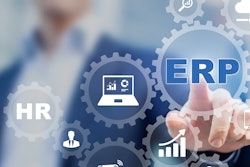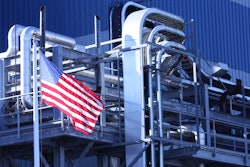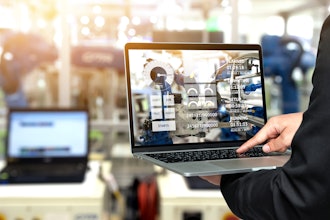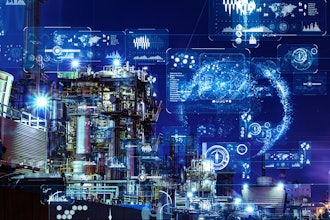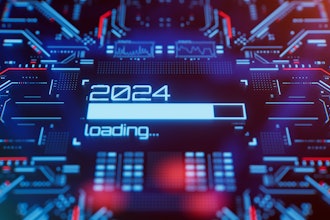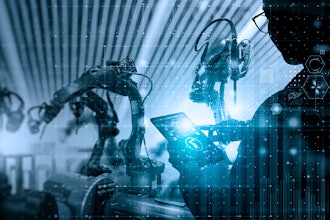Like many people, my smartphone is an integral part of my daily life. I use it to maintain my personal and business contacts, calendars and emails, and to stay connected with social media and manage the smart technology in my home such as the lights and thermostat. And because it’s so important to me, I make sure it’s up-to-date.
In fact, I recently upgraded that indispensable piece of technology. I compared the features and technical specifications of the two newest versions, and decided how much I wanted to spend on that new phone. After much consideration, I decided which version best fit my needs and picked up my new phone this past weekend.
Just as my cell phone is critical to me, an Enterprise Resource Planning (ERP) system is an integral part of complex manufacturing organizations. It is the system of record and oftentimes the single source of truth. Most organizations implement an ERP to improve business performance, ensure regulatory compliance and improve employee productivity. As with any critical system, an ERP needs regular check-ups and upgrades to maintain peak efficiency.
Aberdeen Group research has found that companies on the latest version of software reported 92 percent inventory accuracy compared to 88 percent accuracy for those companies waiting to upgrade. They also had a higher percentage of internal schedule compliance and greater overall customer satisfaction. When evaluating an upgrade to your ERP solution, consider the technical and functional benefits to the organization.
Examining The Technical Foundation
A key factor in an upgrade decision is the technical foundation the system is based on. I knew the processor in my new phone would be better than that in my old one, which obviously means better performance. The minimum storage capacity for each phone was double what I currently had. I could download more apps. I wouldn’t have to purge my photos as often. My entire music library would be at my fingertips. Performance and storage were strong pros to support the upgrade.
Businesses regularly update computers and servers for the same reasons. Those systems are the basis for the privacy, security and reliability of the company’s network. As cyberattacks shift focus from individuals to businesses, ERP systems are potential targets, as they are mission-critical to the daily operations of an organization and any length of time without it can create serious impact. It is important to examine the compatibility of the company’s ERP version with any hardware updates. You should stay up-to-date to capitalize on the benefits of newer and more secure and cost-effective technology.
Another factor is support for your ERP. With each new version that comes out, the vendor must decide how many past versions it will support. According to research by the Aberdeen Group, 22 percent of companies surveyed were backed into an upgrade decision because their vendor no longer supported their ERP version. Staying on an unsupported version to save money in the short-term is false economics. That decision can have serious repercussions. Lack of support means your ERP will not receive updates or security patches, leaving your system vulnerable to cyberattacks.
Integrations are another major technical reason to consider upgrading. Aberdeen Group research revealed that 20 percent of companies upgraded because the old version was incompatible with emerging technology, such as mobile and Internet of Things (IoT). If your solution doesn’t integrate with other key business systems, your business processes are likely to involve a number of time-consuming workarounds, which will eventually lead to redundancies, omissions, errors, rework and frustration, leaving your staff less efficient.
Going Beyond The Bells & Whistles
Considering the similar technical foundation of my old and new phones, the different features of each played a major part in my upgrade decision. One had a much larger display, higher resolution and a better camera, but was slightly larger and heavier. One was only available in two colors; the other offered four choices. The biggest difference was the home button. Do I choose the fingerprint sensor or facial recognition? And was that choice worth the price difference?
Every ERP upgrade not only includes improvements to the underlying system, but also comes with a number of new features and improved functionality. Your organization can realize key business benefits when taking advantage of the new features available when upgrading. Over 50 percent of companies upgrade their ERP to take advantage of new functionality, according to the Aberdeen Group research. Many features that were previously considered a luxury have become standard. Integrated analytics were considered a pricey add-on five years ago; customer demand has led it to being core within many newer versions. Mobile access is another option that has become a standard requirement. Business in general has become more mobile, which means your ERP should be able to accommodate remote access to key features on any device, regardless of location.
Usability is a tremendous functional reason to consider upgrading. A better user interface aids in user adoption, reducing workarounds as employees are less likely to rely on spreadsheets if the ERP has the easy, intuitive interface they get from consumer applications. Research by the Aberdeen Group found that 29 percent of business upgraded because the new version offered enhanced ease of use. More of a byproduct of an upgrade than a benefit is the opportunity to fight “application erosion.” Regular users can easily fall into a pattern of use and forget about functionality that they don’t utilize on a daily basis. During an upgrade, the company should also take the time to provide refresher training along with learning on new features and workflows.
Watch And Wait . . . Or Act Now?
Although my preferred phone manufacturer unveils a new version every year, I compare the latest and greatest with what I have and what I need. At the same time, I don’t want to lag too far behind the current technology since I consider my smartphone to be a necessary component of managing my personal and professional life.
In a similar vein, while you’re considering whether technology changes and improved features call for an upgrade, consider the big picture: Outdated ERP solutions put your business at risk of being left behind, especially if competitors take advantage of the latest technology available in newer versions. An inadequate system can hinder communications with suppliers, distributors and customers, and decreased productivity can result in reduced profitability. Is waiting for an update worth those risks? Only you can decide.
Jack Payne is VP, Product Management & Solutions Consulting for Aptean






